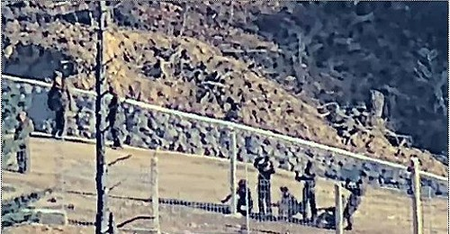
Jerusalem, Feb 5 (IANS) Excavations of a 2500-year-old tomb compound in the Negev desert in southern Israel revealed ancient trade caravans traveling through the area, revealing the region’s possible historical significance as an international trade crossroads connecting cultures.
The Israel Antiquities Authority (IAA) said on Wednesday that arrowheads dating back around 2,500 years and originating from Yemen were discovered in the excavations.
Among the artifacts discovered were copper and silver jewelry, alabaster items used to prepare incense, hundreds of beads made from various colorful stones, rare types of shells, an Egyptian god Bes amulet, and alabaster vessels used to transport incense resins from southern Arabia.
Meanwhile, traces of red ochre, a substance used in ancient cultures to symbolise blood and for other decorative purposes, were also found on the arrowheads and other artifacts, which, according to the researchers, may indicate their religious or cultic significance.
“Arrowheads, copper and silver jewelry, hundreds of beads made of coloured stones, an amulet of the Egyptian God Bes, alabaster vessels for storing precious perfumes: intriguing evidence of merchant caravans from Yemen from about 2,500 years ago has been uncovered in the Negev and will be presented for the first time as part of the ‘Archaeological Mysteries’ lecture series next week,” the Israel Antiquities Authority said in a post on X.
According to the IAA, the discovery near Tlalim Junction south of Beer Sheva suggests trading caravans from Arabia and even distant Yemen travelled through the Land of Israel, pointing to wide-reaching cultural interchange between southern and northern Arabia, Phoenicia, Egypt, and southern Europe.
The burial sites suggest two potential scenarios: either the location served as a burial ground over generations for passing trade caravans, or the tombs were constructed for a mass burial of individuals from a single caravan that was attacked, Xinhua news agency reported.
The researchers concluded that their discovery provided evidence that the Negev was a lively meeting place for merchants and cultures, not just a passage for international travel.
–IANS
int/as




